I’ve had a lot of people ask me, “What’s the best way to join wide-binding cane strands”?
So, in this post, I’ll show you how to join the cane stop-and-start strands so they are invisible and look professional.
I really love weaving with wide-binding cane and this stool proved to be a really great project that was fun to do.
Wide binding cane comes in several widths, ranging from 4MM wide binding cane to the large 10MM slab rattan.
In this footstool project, I am using natural and dyed 6MM wide binding cane in a diamond design on top and simple twill pattern on the bottom.
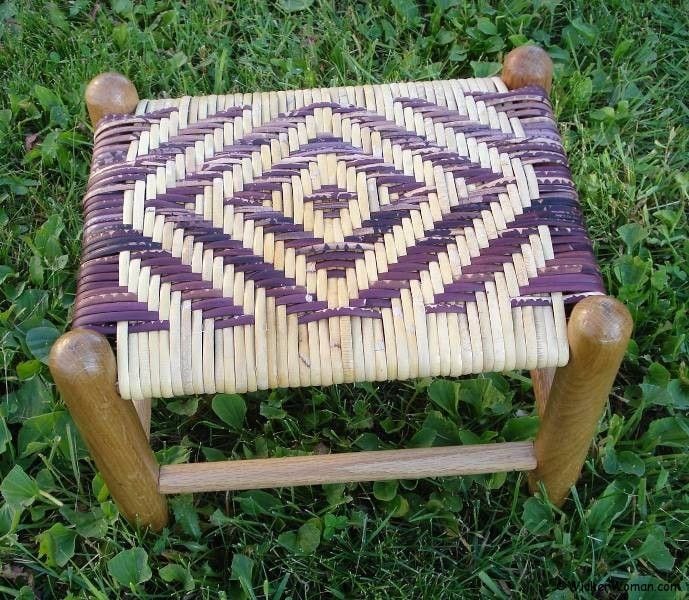
Since cane has a natural glossy finish on the outside or right side, and doesn’t absorb dye or stain well, it’s difficult to color. But it can be done, and several supply companies sell dye cane.
So, if you don’t want to do it yourself, you can purchase pre-dyed cane from the good folks on my Cane & Basket Supply Directory™.
The Cane & Basket Supplies Directory™ is where you can purchase all the materials and tools you will need for this wide-binding cane footstool project.
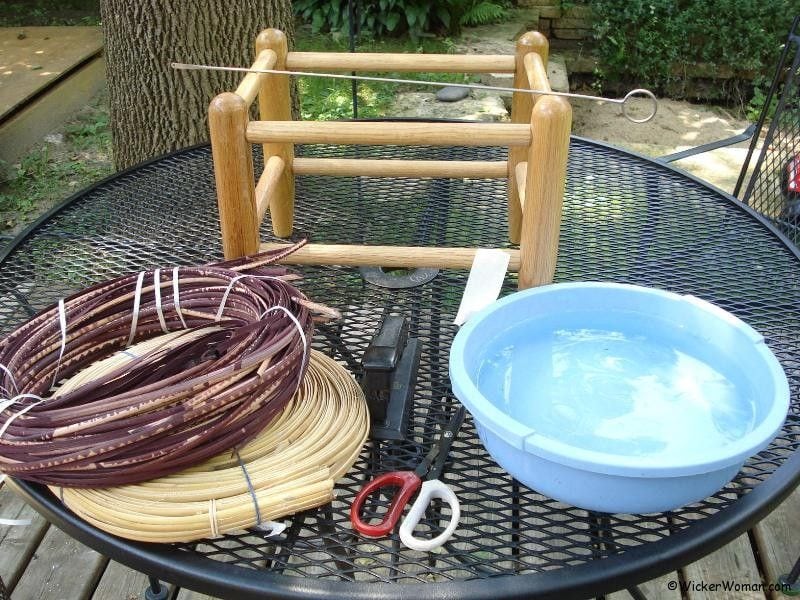
Tools and Materials: Wide-Binding Cane Footstool
The tools and materials needed for this project are minimal, some of which you might already have at home:
- Footstool frame with rungs
- 6MM dyed and natural wide-binding cane
- caning needle
- dishpan or bucket
- office stapler
- scissors
- needle nose pliers
- bath towel
How-to Join Cane Strands
We will be using a joining method that includes the use of an office stapler.
Joining strands using the stapler is only necessary on vertical or foundation strands only, not horizontal strands.
Friction holds the horizontal overlapped strands in place without stapling.
When you run out of cane while weaving your vertical foundation warp strands, overlap the ending strand with the new strand for about 6-8 inches, with the top or right sides showing upward.
Make sure the join will be on the bottom of the stool, not the top.
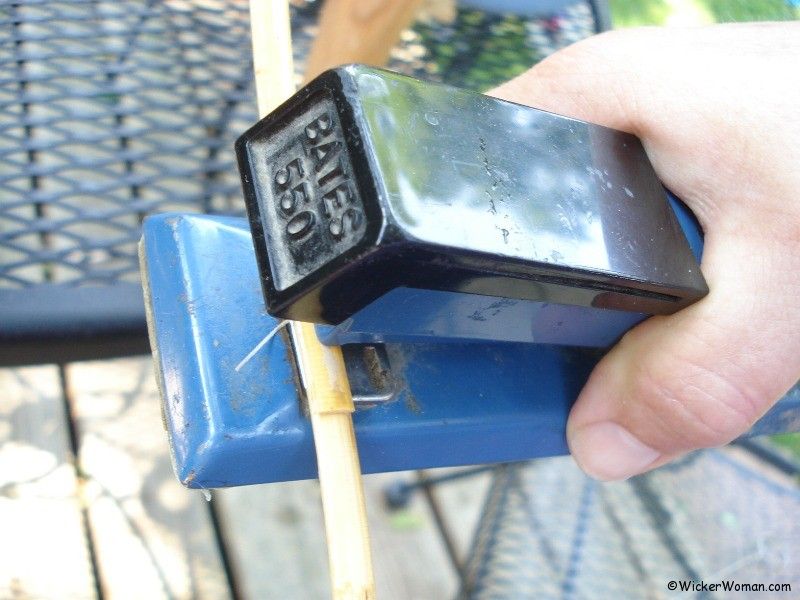
Then using an office stapler, staple three times down the right-side length of the overlapped strands.
I usually put one staple at the beginning of the overlap, one in the center, and one at the end.
Be sure that the points of the staples go into the center pocket weaving and curve them over using your pliers so you don’t get poked or stuck by the ends.
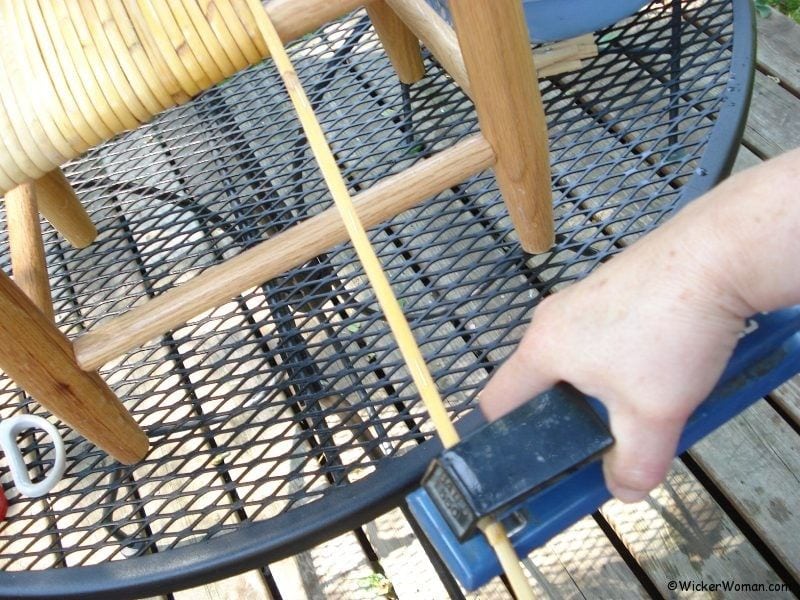
Leave all the staples in place until you have completed weaving all the horizontal strands.
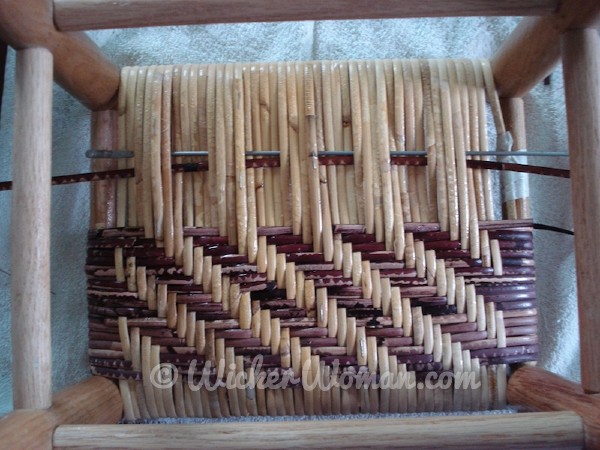
Remember that with the horizontal weavers, all that’s needed is the long overlap; there is no need to staple as the tension and friction alone will keep the weavers in place.
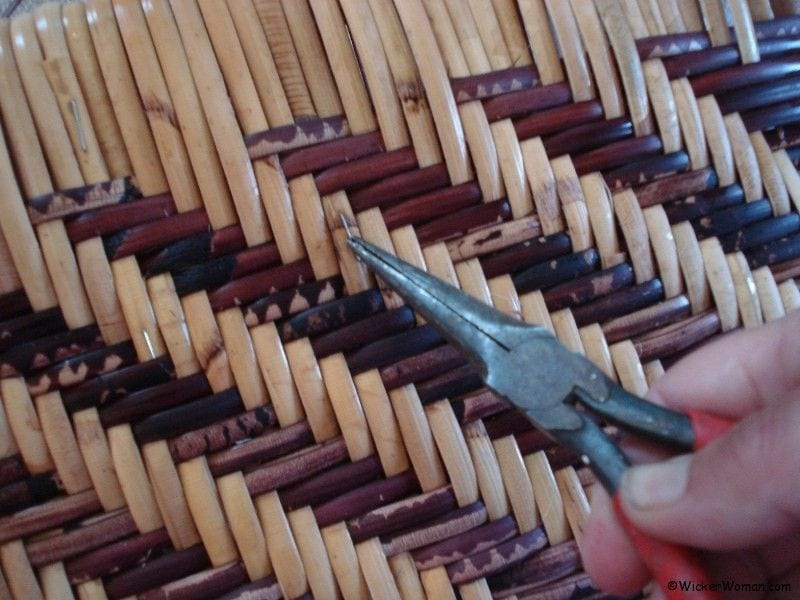
Then, as a final finishing touch, remove any staples that show through on the bottom using a pair of needle nose pliers.
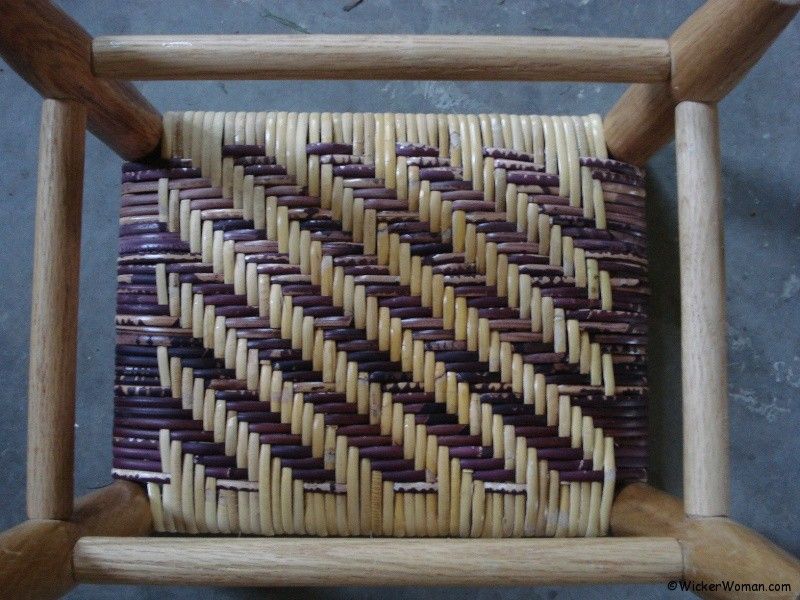
And there you go! Now you, too know how to join the warp strands when setting the foundation and weaving a wide binding stool or chair seat for a professional look.

Congrats and Happy Weaving!

What are your thoughts about this blog post?
Leave your comments below and share with your social networks!
~~Live Well, Laugh Often, Love Much ~~
Happy Weaving, until next time!



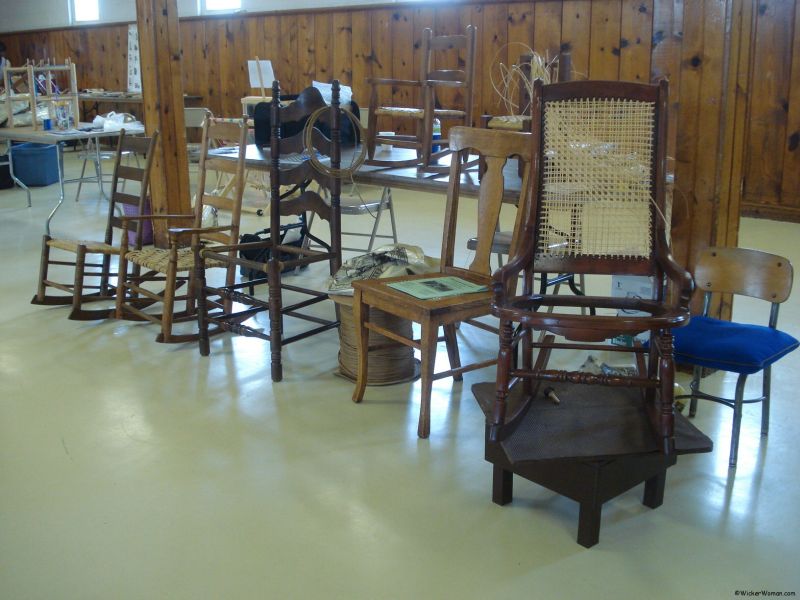
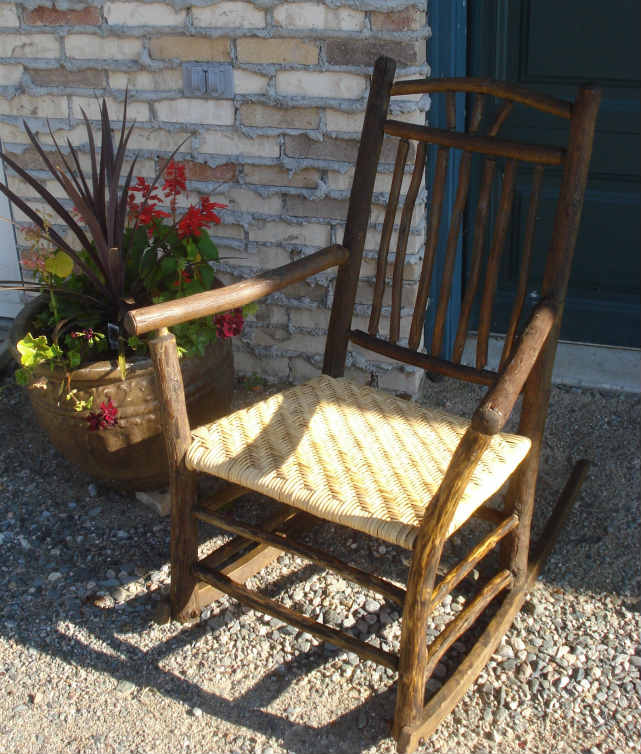
I am really hoping that you can help me. A number of years ago, I wove a large footstool using binder cane (what appears to be about 1/4″ wide) in a 5/5 herringbone pattern (top and bottom weave match). I want to make two more of these stools for the pastors of my church who are retiring after 30 years, but I can no longer find my pattern. Unfortunately, I am a novice at this so I cannot determine from looking at my stool how I actually wove it, especially how to start it and finish it. I am really hoping that you can help me with instructions on how to do this, or point me to where I can find them. I actually purchased two “complete” chair caning, weaving books, but they were of no help. I have looked high and low on the internet, but also have not found anything specific enough to be helpful to me. Please help me Wicker Woman, you’re my only hope!
Hi Jean,
Nice to hear you’ve done chair caning in the past, but sorry that you are having problems with the herringbone pattern. Did you get my reply by email that I sent? Since my response was pretty long, I decided to email you instead. But I am posting a bit here for the benefit of others.
Whenever weaving a wide binding cane footstool in the herringbone or twill design, I always choose a 3×3 twill weave on top and then a 4×4 twill on the bottom side or a 4×4 on top and 5×5 on the bottom. It’s really just my preference but looks the nicest in my estimation.
Most of the time I choose the easy one of 4×4 on top and 5×5 on the bottom. I never do 5×5 on the top though, feeling the 4×4 looks better and stays together a bit better, too.
I wrote a couple blog posts about weaving with wide binding cane that you might find helpful, although I still haven’t posted full instructions for them yet on my site. That’s a project in the making, however.
https://www.wickerwoman.com/loosen-up-use-caning-tension-rods.html
https://www.wickerwoman.com/weaving-wide-binding-cane-stool.html
What books did you purchase that are not working for you? My suggestions are posted on the Seatweaving FAQ page. Good luck and let me know how things turn out.
https://www.WickerWoman.com/seatweaving-faq